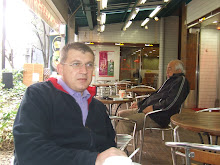Thursday, December 10, 2009
Sunday, December 6, 2009
Friday, November 20, 2009
Thursday, November 19, 2009
Saturday, November 14, 2009
All About Head Lice And Symptoms

The parasitic insect, head lice, scientifically known as Pediculus humanus capitis, are an obligate ectoparasite of humans. These are wingless insects and they feed exclusively on human blood. Head lice are incapable of flying and their short, dumpy legs do not allow them to jump or walk efficiently on flat surfaces. Head lice can infest any person, irrespective of personal hygiene and can spread easily from person to person through direct contact. They can be treated by using lice-killing shampoos and cream rinses.
Head lice develop in three forms, namely nits, nymphs, and adults.
Nits: When head lice hatch, they tend to leave empty shells known as nits attached to your hair. These are head lice eggs and are hardly visible. Very often, you may mistake them for dandruff or tiny droplets of hairspray. They are oval-shaped and have a yellow or white color. Unlike dandruff, they are firmly attached to the hair shaft. Nits take approximately one week to hatch.
Nymphs: Nits hatch into nymphs, which are immature adult head lice. Nymphs take approximately 7-10 days to mature into adult head lice. Nymphs obtain their nutrition by feeding on human blood.
Adults: Adult lice are about the size of a sesame seed, measuring approximately three mm in length. They are capable of laying their own eggs. They are either tan or grayish-white colored. In people with dark hair, an adult louse will look darker. Adult lice can live for approximately 30 days on your head.
Unlike other hematophagic ectoparasites, head lice spend their entire life cycle on a host.
Causes of Head lice:
Although head lice can infest people of different age groups, they are more common in children aged 4 to 11. In comparison to boys, girls are more likely to get infested by head lice.
Head lice spreads through head-to-head contact or infested combs, towels or brushes. They can be found in hair of all length and type. Although they are found in both, clean and dirty hair, they more often infest hair that is not properly maintained.
Symptoms of head lice:
The presence of head lice on your head will surely produce an itchy feeling. The itchiness may be worse on the back of your neck or behind the ears.
If you scratch your head a lot, the skin on the scalp may break and you may develop certain infections.
Other symptoms of head lice infestation include:
1. your pillows being dirtier due to louse droppings and
2. nits sticking to the hair as they grow out
It is recommended that you start the treatment for head lice as soon as you find them.
Head lice develop in three forms, namely nits, nymphs, and adults.
Nits: When head lice hatch, they tend to leave empty shells known as nits attached to your hair. These are head lice eggs and are hardly visible. Very often, you may mistake them for dandruff or tiny droplets of hairspray. They are oval-shaped and have a yellow or white color. Unlike dandruff, they are firmly attached to the hair shaft. Nits take approximately one week to hatch.
Nymphs: Nits hatch into nymphs, which are immature adult head lice. Nymphs take approximately 7-10 days to mature into adult head lice. Nymphs obtain their nutrition by feeding on human blood.
Adults: Adult lice are about the size of a sesame seed, measuring approximately three mm in length. They are capable of laying their own eggs. They are either tan or grayish-white colored. In people with dark hair, an adult louse will look darker. Adult lice can live for approximately 30 days on your head.
Unlike other hematophagic ectoparasites, head lice spend their entire life cycle on a host.
Causes of Head lice:
Although head lice can infest people of different age groups, they are more common in children aged 4 to 11. In comparison to boys, girls are more likely to get infested by head lice.
Head lice spreads through head-to-head contact or infested combs, towels or brushes. They can be found in hair of all length and type. Although they are found in both, clean and dirty hair, they more often infest hair that is not properly maintained.
Symptoms of head lice:
The presence of head lice on your head will surely produce an itchy feeling. The itchiness may be worse on the back of your neck or behind the ears.
If you scratch your head a lot, the skin on the scalp may break and you may develop certain infections.
Other symptoms of head lice infestation include:
1. your pillows being dirtier due to louse droppings and
2. nits sticking to the hair as they grow out
It is recommended that you start the treatment for head lice as soon as you find them.
Find Out More About How To Rid Of A Head Lice On My Site:www.lice-less.com
Labels:
hair,
head lice,
head lice and symptons,
nits
Subscribe to:
Comments (Atom)
